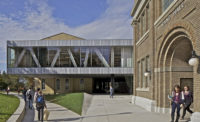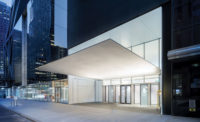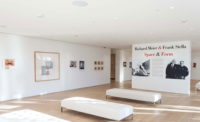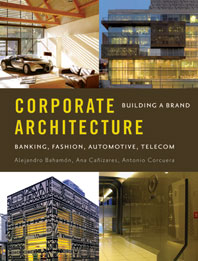Design fairs are crawling with collectors ready to drop thousands of dollars on objects that promise immediate gratification. Case in point: The charming beaded sculptures made by the Los Angeles brothers Nikolai and Simon Haas with the help of women from South Africa’s Khayelitsha Township. The objects—oversized mushrooms and Sendak-like animals—sold out within a half hour of the opening of Design Miami last Tuesday, at up to $150,000 apiece.
But for architects, nothing happens in a half hour, and immediate gratification is elusive. That may be the lesson of Unbuilt, an installation outside the Design Miami tent. It consists of pink foam models of 198 unrealized buildings by Harvard Graduate School of Design students and faculty, raised on a steel frame to provide a bit of shelter. The intent is honorable, but the finished installation reduces buildings of very different scales, functions, and materiality to what are essentially tabletop objects. The school's dean, Mohsen Mostafavi, who was on hand to help launch the installation, pointed out that signs direct visitors to the project’s websites, allowing them to delve into a large and varied body of work. "It's an architectural archive masquerading as a pavilion," he said.
Inside the fair, entrepreneurs were selling architecture to go: Galerie Philippe Gravier of Paris displayed a pair of pavilions by Kengo Kuma, one with a lattice wood frame, the other made of polycarbonate sheets, suggesting a plastic igloo. Each is available in editions of five for upwards of $100,000. At the other end of the tent was a pavilion by New York’s Gluckman Tang (formerly Gluckman Mayner), a stylish lean-to meant to serve as a portable art gallery. Just beyond stood a very curvy picnic house by Zaha Hadid. The Filipino developer Robbie Antonio commissioned Gluckman, Hadid and more than a dozen other architects to design portable buildings, which he calls Revolution Pavilions. Antonio, working with the New York gallerist Edward Tyler Nahem, is offering them for as much as $450,000. Architecture has always been hard to sell as a service; Antonio and others are betting they will do better selling objets d’architecture.
Also in the bauble business in Miami: Fernando Romero, of New York and Mexico City’s FR-EE, was chosen by Swarovski, the crystal maker, to create this year’s Design Miami installation. His crystal-studded geodesic sphere is meant as a one-billionth-scale model of the sun, which he notes was important in Aztec and Incan cultures, as well as homage to Buckminster Fuller. But watching Romero pose for photos with Nadia Swarovski is a reminder that at design fairs, the work architects produce often has very little to do with architecture.
Of course there are plenty of new buildings under construction in Miami, including a science museum by Grimshaw Architects (which adjoins and partially blocks the Perez Miami Art Museum by Herzog and de Meuron) and the Faena Forum, OMA’s contribution to the $1 billion Faena hotel-and-condo complex. At the southern end of the beach, Rene Gonzalez has completed Glass, a handsome condo tower; at the northern end, Richard Meier’s Surf Club—a trio of blocks containing 150 very-high-end condos—is nearly ready for occupancy. The Surf Club developer, who says he is close to selling all the units (for more than $1 billion), let architects John Keenan and Terry Riley turn the Meier-designed sales office it into an art gallery — as a way to show off their new partnership with Joachim Pissaro integrating architecture and curation.
Over on the mainland, the Design District has become a showcase for work by up-and-coming architects, centered on Fujimoto’s blue-glass colonnade, a parking garage by IwamotoScott, and Aranda\Lasch’s pleated building for Tom Ford and others. But the brand name architects' involvement is only facade-deep. Increasingly, architects are having to forego the chance to do what architects do — working with clients to meet specific programmatic needs — in favor of making objects and surfaces that help promote their brands; let’s hope it's a winning strategy for them and the profession.



















